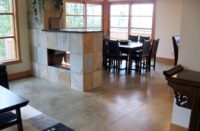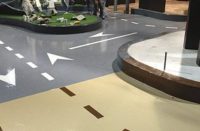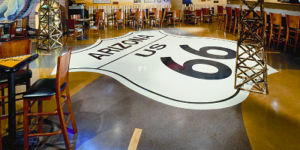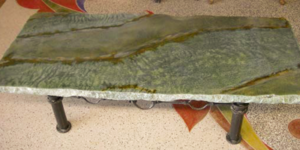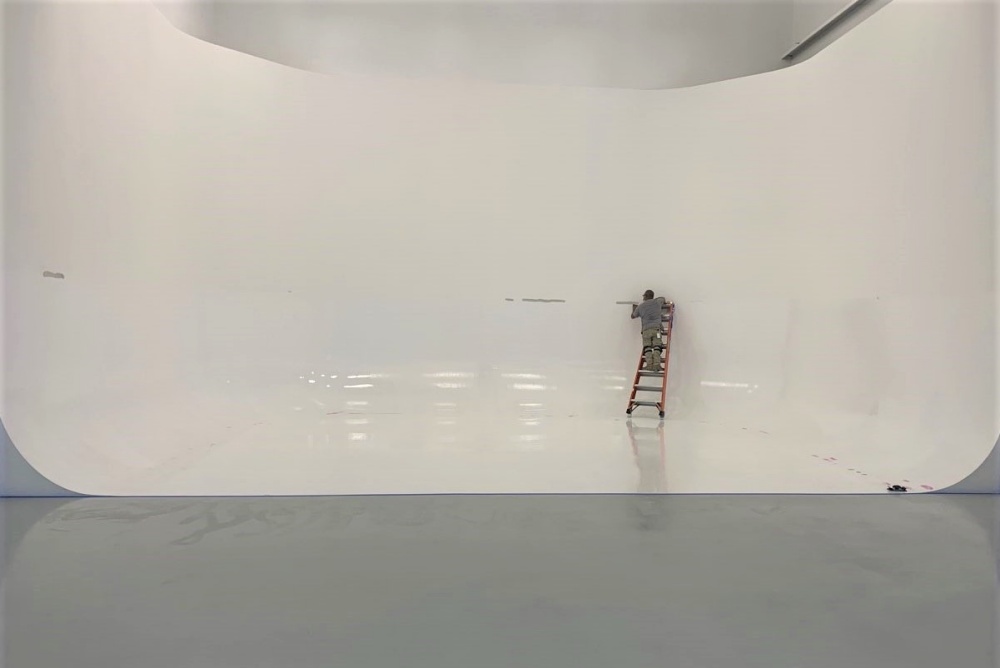
Can you install flawless floors that will completely disappear with the click of a camera? That was the quest Nike recently presented to NEx Systems of Stockton, California. The company, in turn, tasked concrete artisan Adrian Henry and his talented team with the Nike studio job.
Besides sporting a bright-white color, the studio floors had to be completely flat, totally seamless and nonreflective. Plus, they had to be durable enough to handle forklifts and other heavy equipment. Not to mention, stain-proof so crewmen could easily wipe away tire and shoe marks between shoots.
For both studios, NEx’s epoxy experts customized ideal products. They included Kretus white urethane cement and a polyaspartic topcoat, both with a bright-white additive. “It made them super-white,” Henry says. NEx craftsmen also fabricated white curved panels to float seamlessly up the walls.
Henry, the general manager of NEx’s polished concrete/epoxy division, built the system, coordinated the team and executed the project. He credits much of the Nike projects’ success to Jeremy St. Clair and the entire Kretus team from LA.
“I’d also would like to thank my entire team out of Northern California for assisting on both projects as well. There is no ‘i’ in team,” Henry says. “We all win together or we all lose together. And to be very honest, we’ve become accustomed to winning.”
Tackling the problems
A couple of problems plagued the first studio Henry tackled in Los Angeles. A previous subcontractor had simply painted its floor white, but the coating didn’t cut it for Nike’s world-famous product photography. The floor also had a moisture problem created by a leaky planter box outside.
“We ground all the material off the floor and cut in a grid pattern to release the water,” Henry says. “We then filled all the saw cuts with urethane cement and ground that flush with the slab. Then we placed another layer of urethane cement over the body of the floor.”
The other studio, in Hillsboro, Oregon, had a floor whose repeatedly recoated surface didn’t extend to the wall. This created an uneven edge so cameras didn’t roll smoothly.
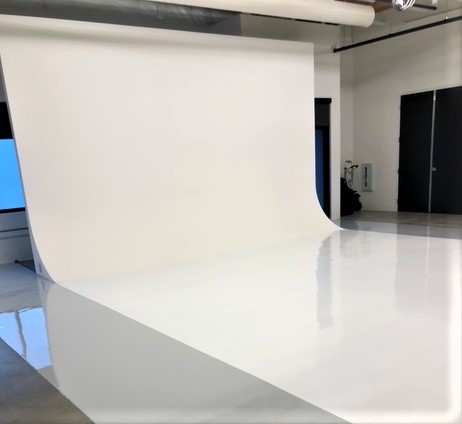 |
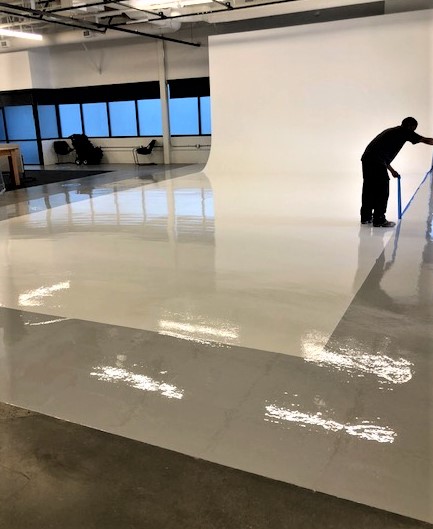 |
“It was very important for camera work to get the entire floor flat,” Henry says. “So we shotblasted the surface and took a 7-inch grinder to get it flush. Then we applied the urethane cement.”
Unlike the studio in LA, the Hillsboro location had a gray border along its perimeter. The gray and white areas, an 11th hour request, seamlessly marry one another, Henry says. “The way the white and gray bump against each other is absolutely flawless.”
Although the Oregon location didn’t have a moisture problem, Henry says he still used the same urethane cement system from Kretus. “It’s a good product that will hold back moisture should a problem ever surface.”
In the end, the NEx team floored both studios with flawless surfaces undetectable in Nike ads. “The purpose of the floors is to be invisible,” Henry says. Mission accomplished.
